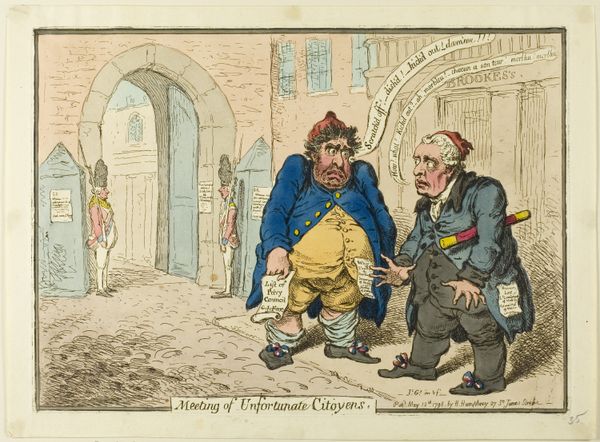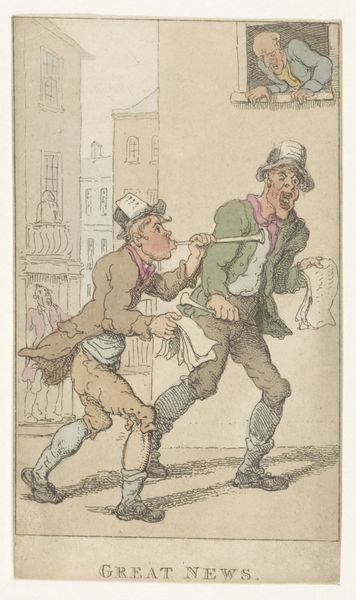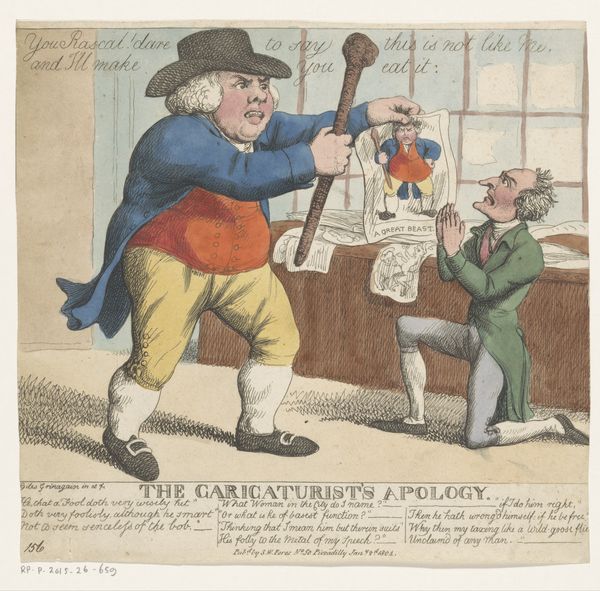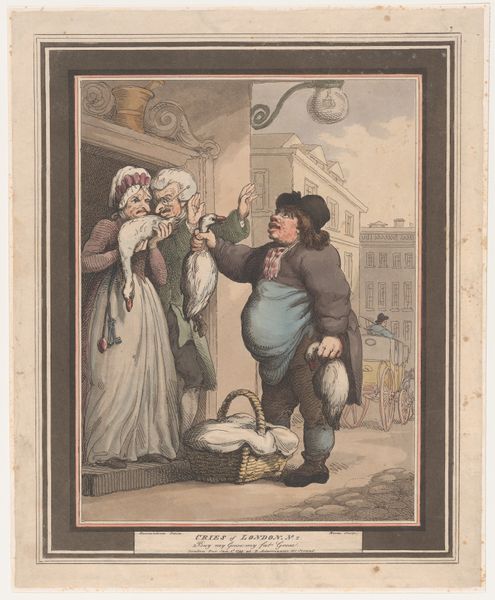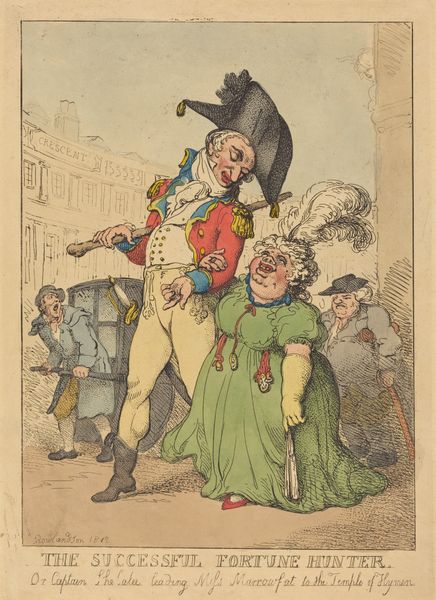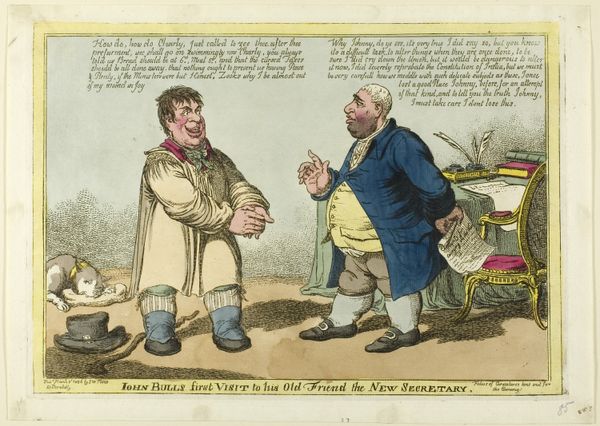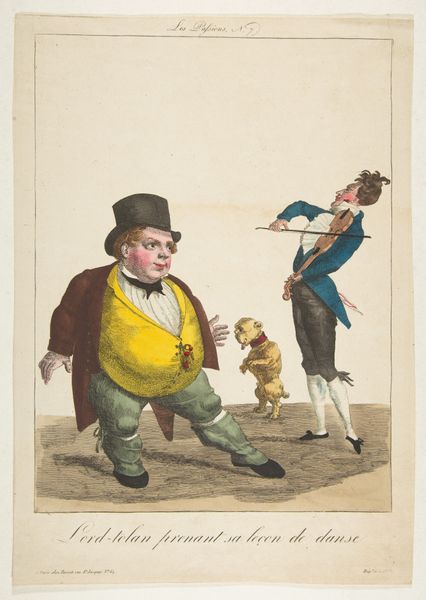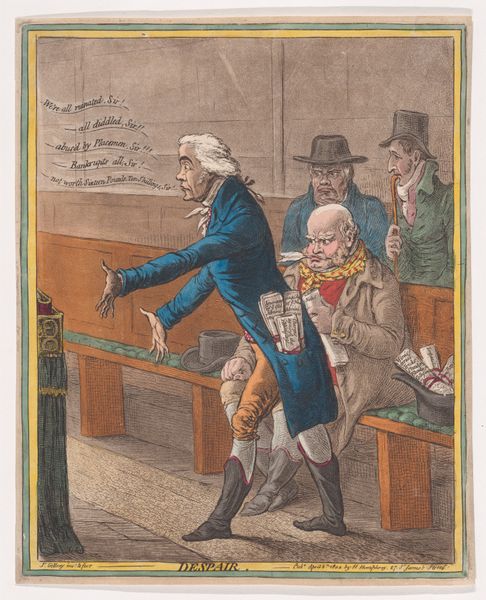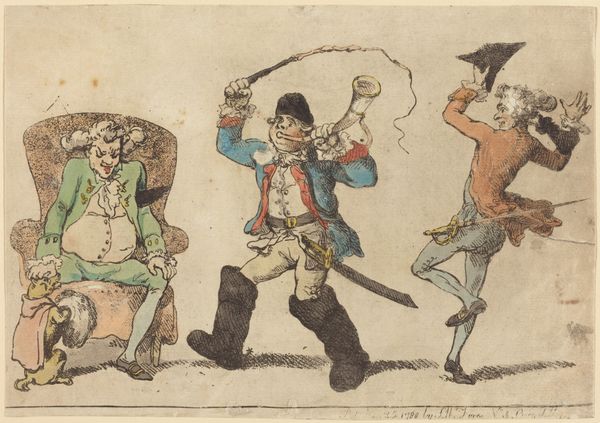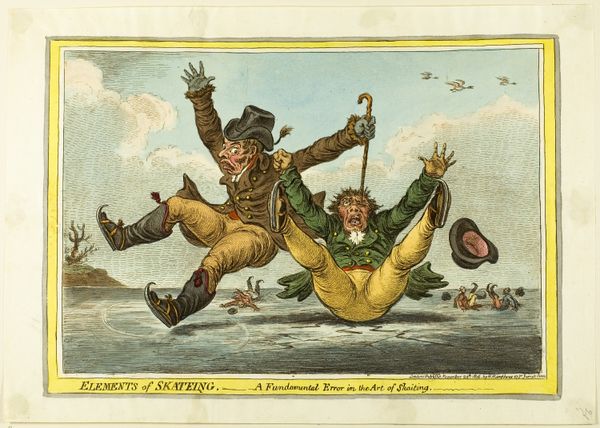
drawing, print, etching
#
portrait
#
drawing
#
narrative-art
# print
#
etching
#
caricature
#
caricature
#
romanticism
Dimensions: sheet: 13 11/16 x 9 13/16 in. (34.8 x 24.9 cm)
Copyright: Public Domain
Editor: Here we have James Gillray’s 1809 etching "Pillars of the Constitution," now at the Met. What strikes me is how clearly it’s meant to be satirical, judging from the exaggerated features of these two gentlemen. How should we interpret its cultural context? Curator: Well, first consider what “constitution” meant at the time. Gillray created this print during a period of immense political and social upheaval. The constitution, far from being a sacrosanct document, was actively shaped by the elite classes, like these caricatured men exiting Brook's Club, a famous Whig establishment. Editor: So, it's a commentary on the Whigs? Curator: Exactly. This piece critiques the underpinnings of political power in Britain, namely the close ties between aristocratic identity and political decisions. Consider, for instance, the figures' unsteady gait, implying their intoxicated state outside of Brook’s club, with the detail of a wine bottle literally bulging from the pocket of one of the gentlemen. Editor: So, "Pillars of the Constitution" is sarcastic, meaning more like, ‘these are the pillars holding things up?’ Are there specific people represented here? Curator: It's generally accepted that these are caricatures of prominent Whig politicians, most likely Lord Grenville and the then-Foreign Secretary Lord Howick. These portrayals are designed to lampoon the supposed moral and intellectual decay within Britain’s governing class, making a broader claim on the elite class of this era. The imagery thus operates on two levels: recognizable public figures, and recognizable political critiques. Editor: It’s fascinating to see how the visual arts participated so directly in the political discourse of the time. Curator: Indeed, and it is important to remember how the elite class and specific sites of gathering shaped art, such as prints, that have been accessible to broad audiences throughout the historical record.
Comments
No comments
Be the first to comment and join the conversation on the ultimate creative platform.
